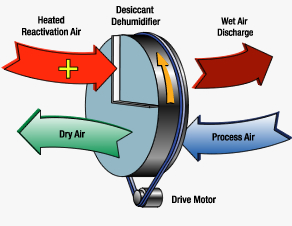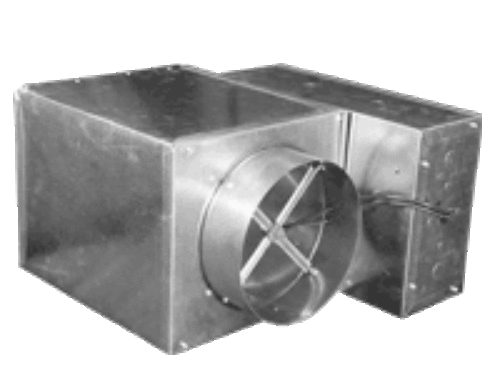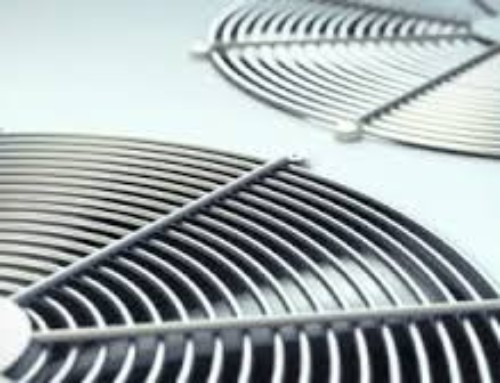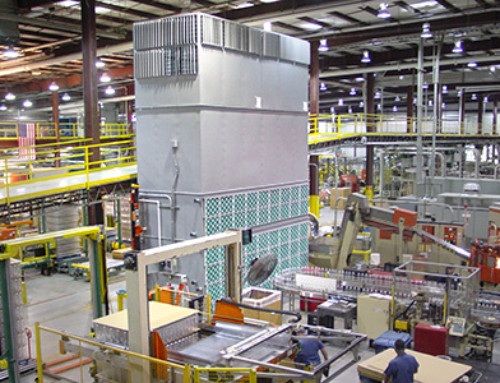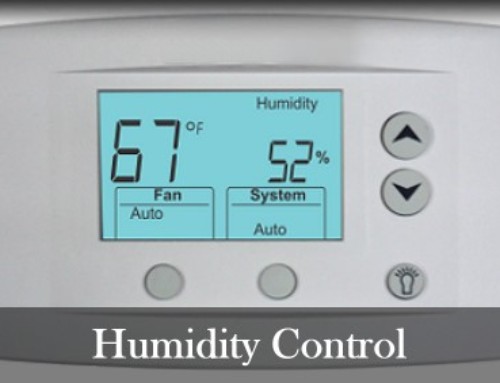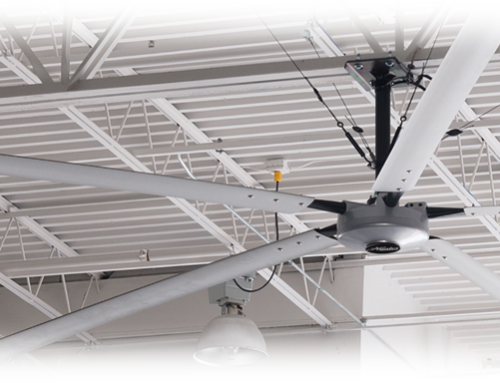The Good, Better, Best of Dehumidification
It is understood that at any point air will have a specific quality in terms of temperature and humidity. If you look at a psychometric chart, the dry bulb, web bulb and its associated dew point, relative humidity and vapor pressures can be determined. (Feel free to read psychometrics for the common man).
In most cases, dehumidification occurs whenever you cool. Air hits a cooling coil, the dry bulb drops and the relative humidity rises to 100% (at the dew point) and the extra moisture comes out of the air by means of the condensate.
In cases where there is an elevated amount of moisture in the air compared to the sensible heat, a high humidity condition can occur. Think of a summer day after a rainstorm; it’s cloudy and not very hot, but it’s sticky. (i.e., 75F and 85% RH). If the relative humidity is high but the dry bulb is correct there is a challenge for standard equipment. The thermostat will say satisfied but an uncomfortable condition will exist. To pull moisture, the thermostat would have to be lowered which would lower the dew point in the space but a “cold clammy” situation will occur.
The above paragraph can occur more often in spaces where there is moisture introduction regularly- high people, a lot of outside air, or a process like a shower or wash down (kitchen, laboratory, etc). If this is the case, a commercial dehumidifier may be required.
There are many types of units that can accomplish dehumidification and like in most comparisons have their pros and cons.
The most common type of dehumidification is using hot-gas reheat. Essentially a humidistat would determine a need for dehumidification and would engage the compressor to wring out the moisture and use a secondary condenser coil downstream of the cool coil to heat the air back to the proper temperature. It works well, but it is common to oversize the compressor capacity in order to bring the dewpoint down which brings the head pressure up, costing energy.
One thing to consider from the last paragraph is using a refrigeration sub-cooling cool. Think of it this way: In considering that the compressor will compress the refrigerant to get it to about 125F to be sent to the condenser coil where it will condense against the warm ambient air. This liquid is going to the evaporator coil, warm. Its not until the refrigerant hits the TXV where the cold occurs (as the TXV will drop the pressure which drops the temperature). If you take that liquid on its way to the evaporator via a coil downstream of the evaporator, 2 interesting things occur. The more obvious is you get reheat (similar to hot gas reheat). An interesting byproduct is that heat transfer will effectively lower the warm liquid going to the TXV. As a result, once that “Sub-cooled” liquid hits the TXV, its temperature becomes lower and you naturally get a lower leaving air dewpoint without increasing compressor size! You are essentially moving sensible heat from where you don’t want it to where you do. (read that paragraph again!). The subtle difference between the h0t-gas reheat and the sub-cooling coil is hgrh uses heat of rejection to reheat (free heat), but the sub-cooling coil is using moving energy from where you don’t need to to where you do (recycled heat).
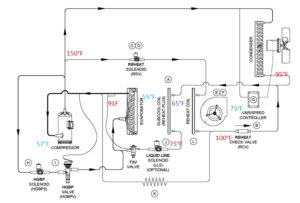
Official Subcooling Diagram
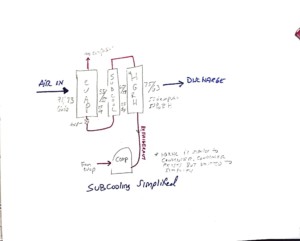
A similar approach, especially in chilled water applications is using a wrap-around Heat Pipe. Essentially, the sensible heat from the air is moved from before the cooling coil as reheat after the cooling coil, essentially reducing the load on the cooling coil. See below:
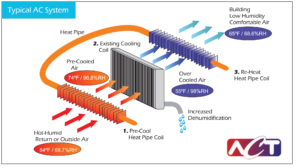
The next option is to use a desiccant dehumidifier for applications where a cooling coil cannot be used. Think about it this way… If your dewpoint is lower than 45, a DX coil would have to be so cold that moisture coming out of the air would freeze the coil. Another reason to use desiccant is for quick drying situations as the larger the dew point depression, the quicker the process. Unlike using a cooling coil to remove the moisture, a desiccant wheel is used to pull the moisture out. Similar to an energy wheel, there are 2 air paths… the process and the regeneration sides. The wheel will operate on the premise of warmer dryer air paths; the process air will get dried by the wheel and when its on the regeneration side will reject the moisture from a hotter, dryer source. The heat source would be a gas burner, electric heat, or steam coil. The performance of the desiccant process depends on the wheels thickness, regeneration heat, and regeneration air. The dryer the air required will result in more sensible heat in the process air stream. A Pre and or Post Cooling coil may be required to not overheat the space.
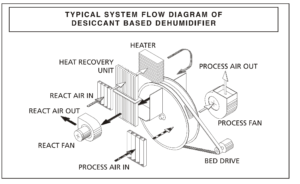
If the application requires a little better than the refrigeration option but not as industrial as a conventional desiccant process, there is the “commercial desiccant process” (We call it DES/DX technology). In considering the desiccant process adding sensible heat into the space, DES/DX technology uses a evaporator, compressor and condenser to precool the air and use the not-so-warm condenser air to regenerate the wheel.
Another option for regenerating the wheel is using a passive process. Unlike the above which is considered active (because the heat source is the driver of the output), the desiccant wheel gets regenerated by the leaving exhaust air. The lower amount of heat available will not give as much dry air compared to a direct fired burner, but the output may be better suited and will cost way less. The one thing to mention, however, is because it is passive, the capacity is directly coupled to the outside air being used. Using the tepid humid day as an example, the passive desiccant will not be very effective.
Additional information:
Psychometrics for the Common Man
973-536-2220


